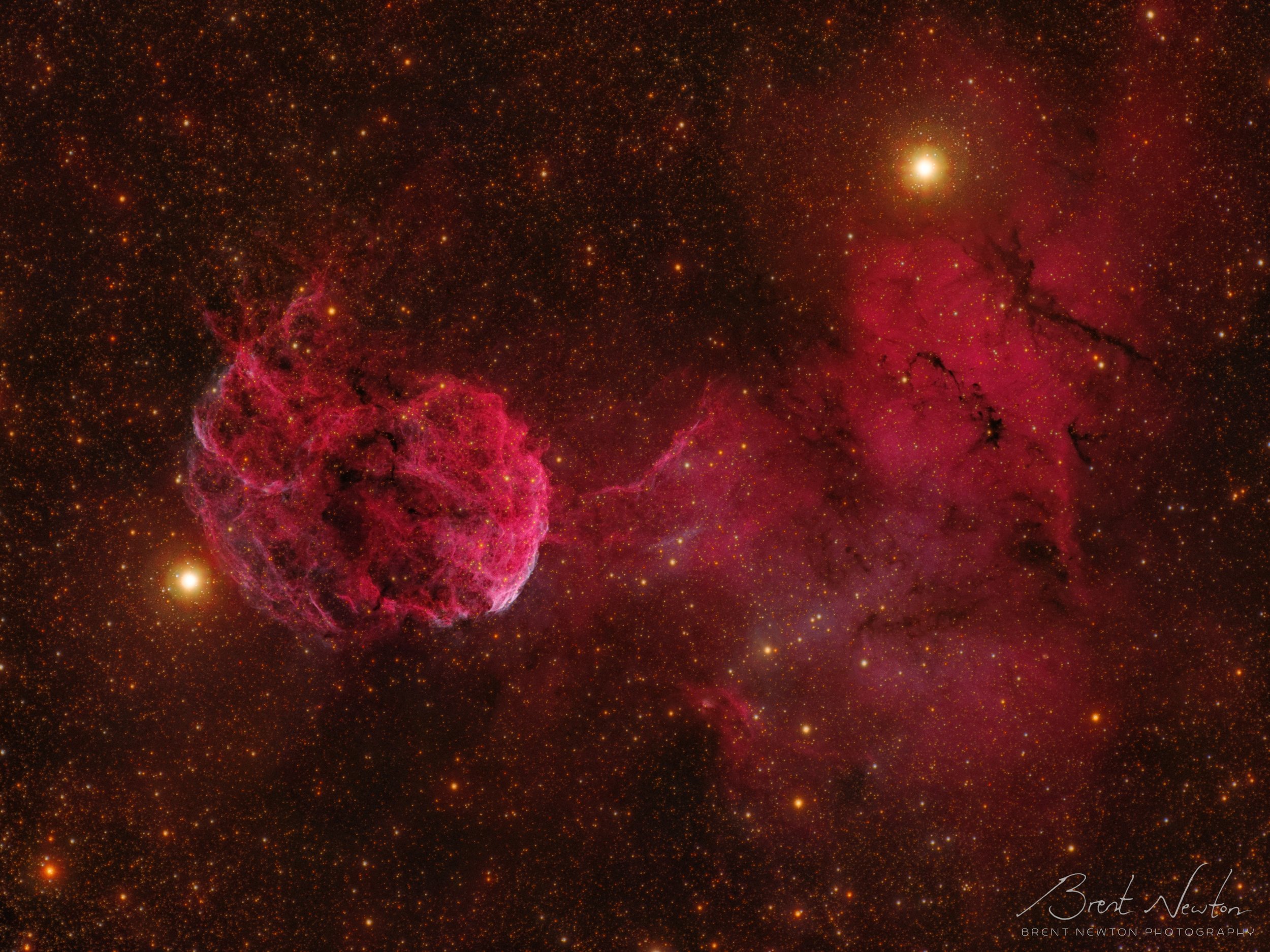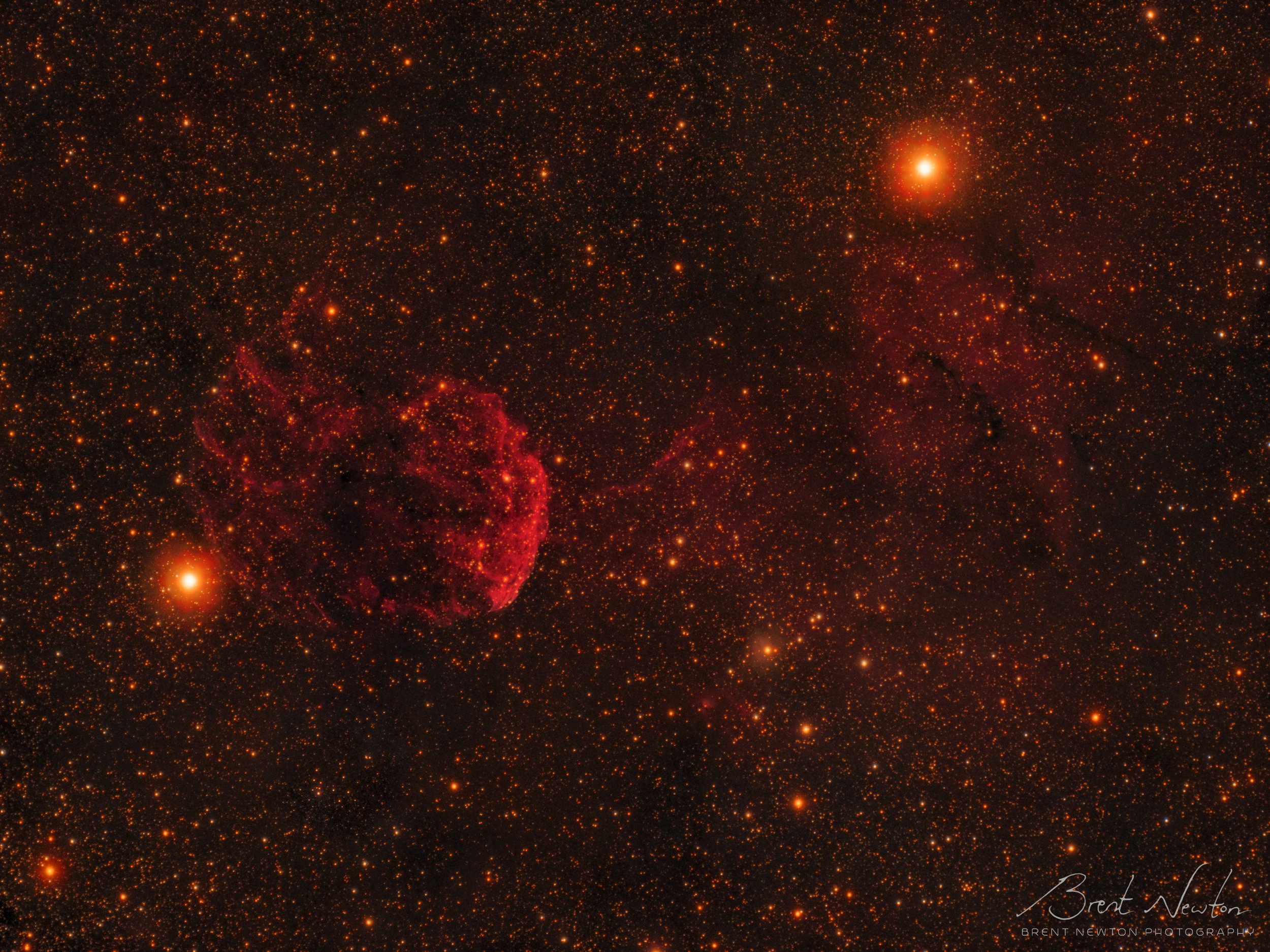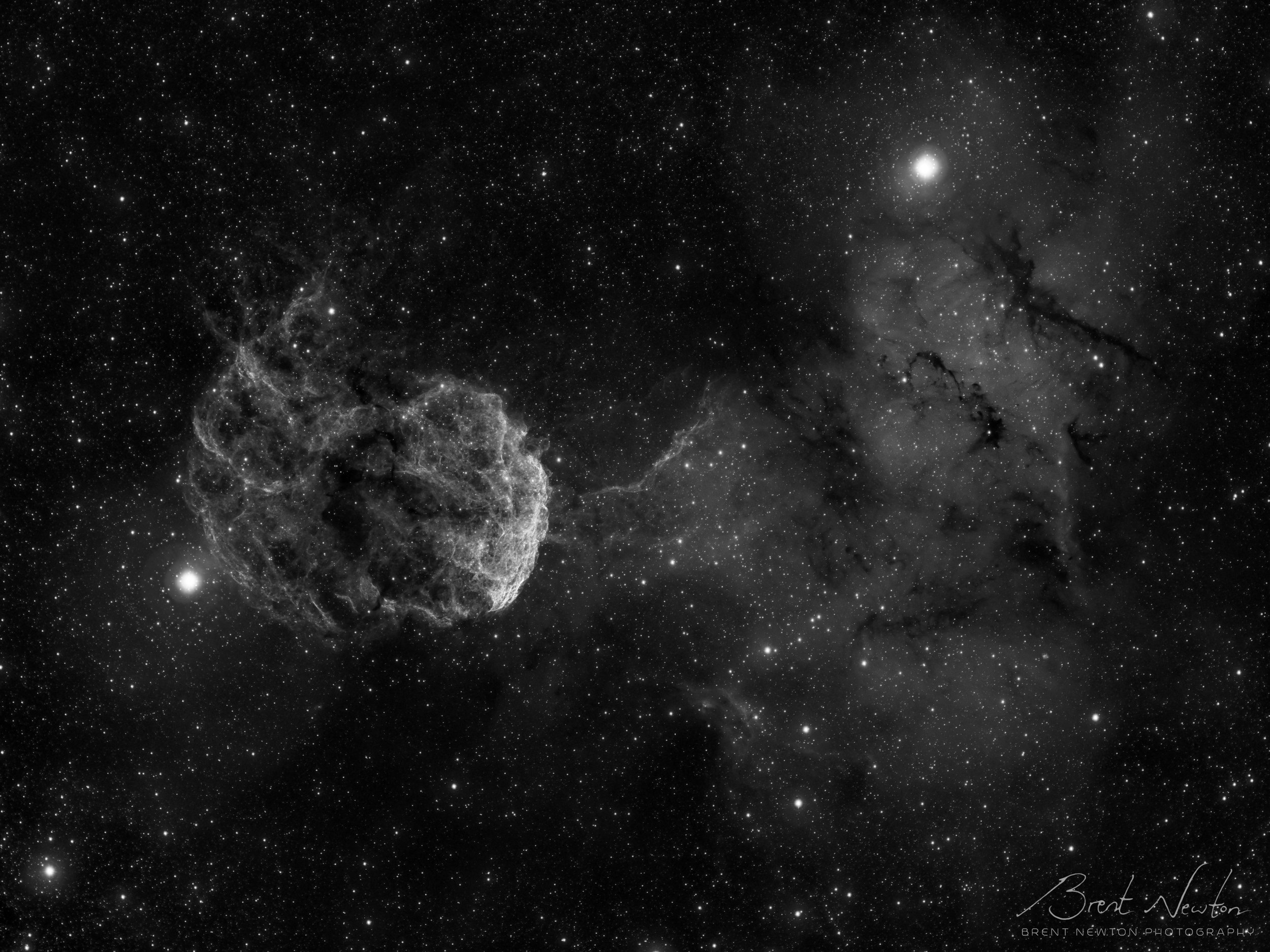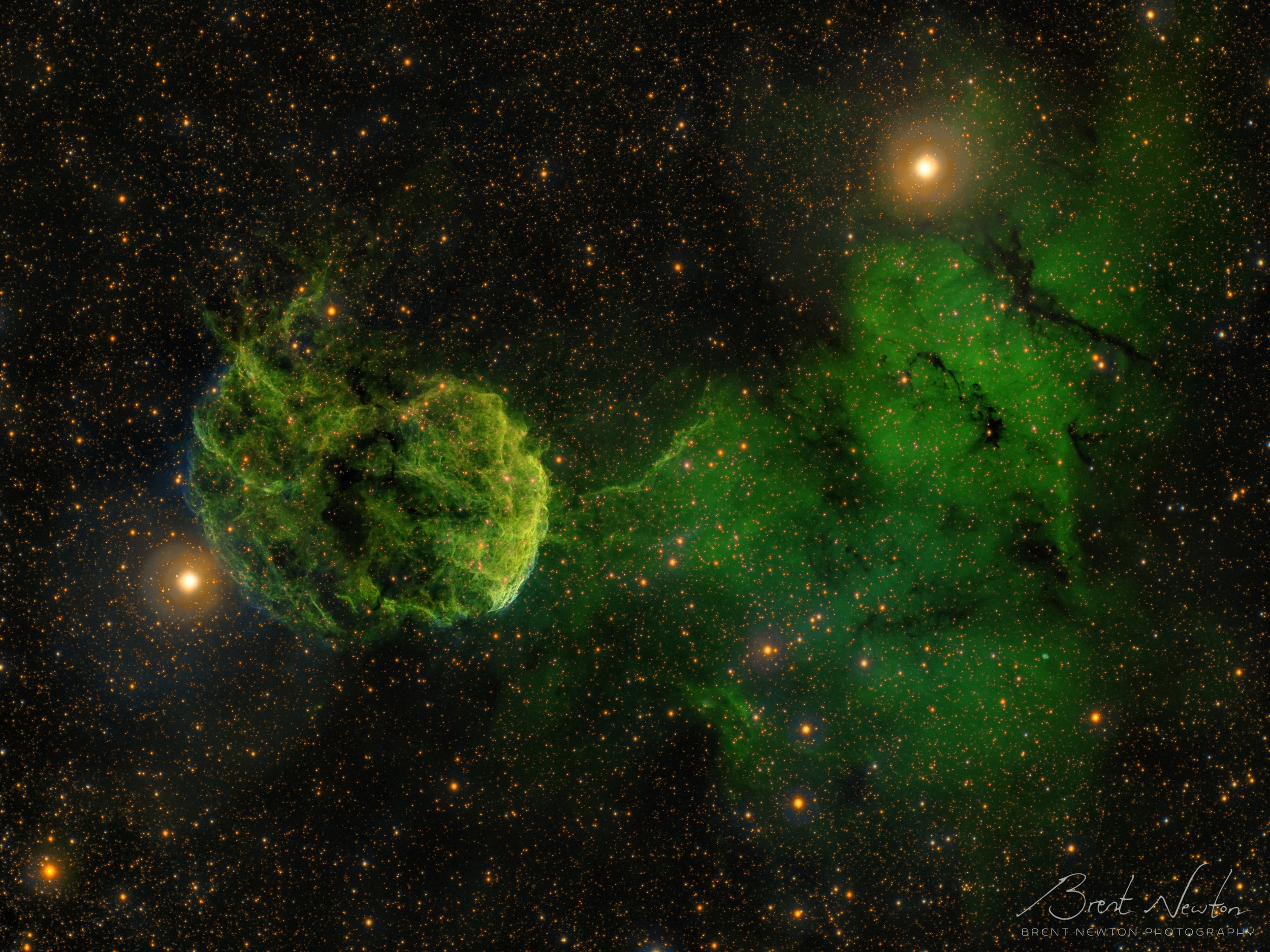The Jellyfish Nebula




Original 2019 Edit
Image Details:
IC 443 (left) is a supernova remnant in the Gemini constellation located 5000 light years away and roughly 70 light years wide. Originally thought to be a result of a single supernovae (a large star detonating at the end of its life and distributing its matter outwards in a violent manner), astronomers eventually found it to be a result of two such events. The younger supernova is somewhere between 3,000-30,000 years old, with the older event occurring more than 100,000 years ago.
This area of sky is visible during Wintertime and the long periods of night make capturing large amounts of data comparatively easier than Summer targets. This photo still holds the second-highest capture time I’ve ever accomplished at 72 hours of combined exposure.
August 2022 Reprocess:
The original edit was likely one of my best images ever captured at the time, but with time and further improvement in other projects I began noticing increasing amounts of “errors” in the original result. Most notable are the two bright stars Tejat and Propus. Their proximity to the diffuse nebula and bright halo effects caused by the filters in use made them a source of constant interference when attempting to brighten the background nebula off of the background. The nebula itself, while it does spread throughout the field of view, also suffered from comparatively crude applications of noise reduction and caused much of the background to take on a plasticized appearance.
The newer edits, while also benefitting from my lukewarm crusade in regards to accurate narrowband color representation as compared to the predominant pale red of the original, maintains a better balance of noise reduction versus brightened background. I also included a false color SHO mix - I have never been particularly interested in False Color imaging and this project marks 1 of 2 total times I have even used my Sii filter in the past 4+ years, but it does provide interesting color contrasts at times.
Equipment:
William Optics Star71-II Petzval APO (345mm Focal Length, F/4.9)
ZWO ASI1600MM-P, ZWO Filters
Celestron CGEM-II
Autoguiding: Orion 50mm Guidescope + ZWO ASI224MC
Exposures:
Red, Green, Blue: 23, 23, 26 x 120” (Total: 2h 24m)
Hydrogen-Alpha 7nm: 135 x 600” (Total: 22h 30m)
Oxygen-III 7nm: 113 x 600”, 44 x 1200” (Total: 33h 30m)
Sulfur-II 7nm: 85 x 600” (Total: 14h 10m)
Misc Details:
Capture Software: AstrophotographyTool, PHD2 (guiding), Pegasus Powerbox (dew heater control, power management)
Processing Software: PixInsight
Taken from: Wichita, KS, Bortle 5
Capture Dates: 29 December, 2018; 2, 4, 7-8 January, 7-8, 12 February, 3-4 March, 2019
Annotation
Annotated. Note Planetary Nebula Howell-Crisp 1 / HoCr-1 in the lower right, disc. 2006
